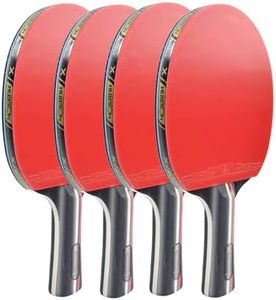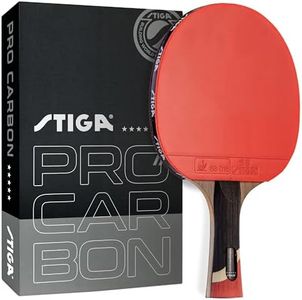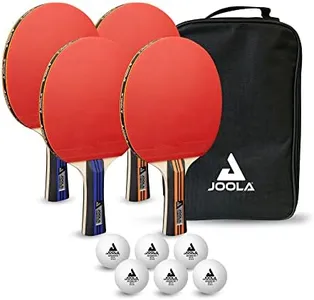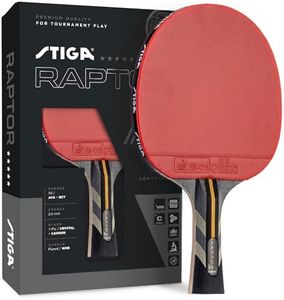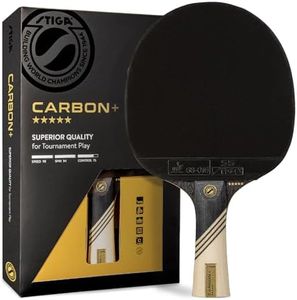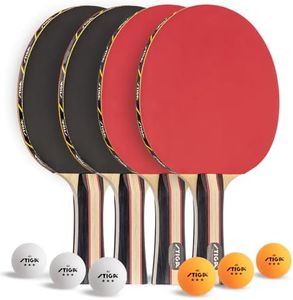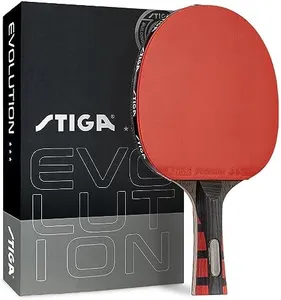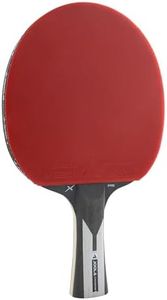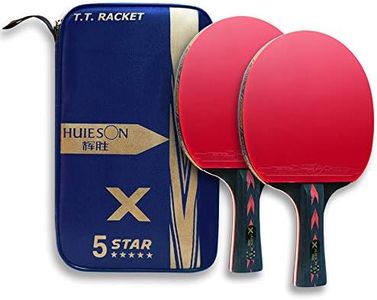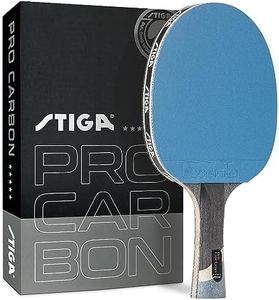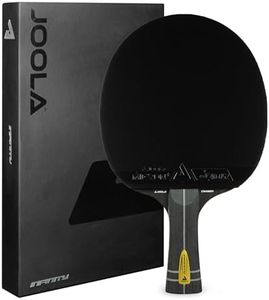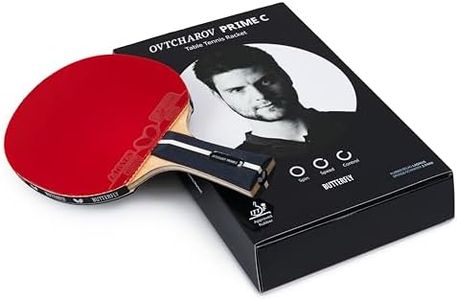We Use CookiesWe use cookies to enhance the security, performance,
functionality and for analytical and promotional activities. By continuing to browse this site you
are agreeing to our privacy policy
10 Best Table Tennis Paddles
From leading brands and best sellers available on the web.By clicking on a link to a third party's website, log data is shared with that third party.
Buying Guide for the Best Table Tennis Paddles
Choosing the right table tennis paddle is essential for improving your game and enjoying playing, whether you're just having fun or aiming to get better. The best paddle for you will match your playing style and skill level, and understanding what features matter can help you avoid common mistakes. Consider how often you play, what feels comfortable in your hand, and if you lean more towards attack or defense. Focus on paddle specs rather than brands to find the right fit.Blade MaterialThe blade is the solid part of the paddle, usually made from wood or a combination of wood and other materials like carbon fiber. This affects the paddle’s strength, weight, and how much power you can generate. Pure wood blades are common, offering good control, while those with carbon layers are stiffer and provide more speed. Beginners typically benefit from all-wood blades for better touch and learning control, while more advanced players seeking faster shots might pick paddles with composite materials.
Handle TypeThe handle is where you grip the paddle, and it comes in shapes like flared, straight, or anatomical. This mainly affects comfort and grip security in your hand. Flared handles are a popular choice because they fit most hands snugly and prevent slipping; straight handles allow for easy grip changes; anatomical handles suit those who want a contoured feel. Try each handle style to see which feels most natural to your grip, especially if you play for long sessions.
Rubber TypeRubber covers the blade on both sides, and its texture affects ball spin and speed. Smooth (inverted) rubber offers high spin and control, while pimpled rubbers (short or long pimples) give unique effects, disrupting spins or increasing control. If you’re a beginner, start with smooth rubbers that are not too sticky, as this helps balance learning control and generating spin. Advanced players choose rubber types that suit their strategies, such as spin-focused or defensive rubber.
Sponge ThicknessUnder the rubber is a layer called the sponge, which affects ball speed and control. Thicker sponges (2.0 mm or more) allow for more power and speed but might make controlling your shots harder. Thinner sponges (around 1.5 mm) help with touch and precision, which is helpful for defensive or control-oriented plays. Beginners and those favoring control should consider paddles with thinner sponges; attackers or experienced players often prefer thicker sponges for more aggressive shots.
WeightThe total weight of the paddle affects how quickly you can move and react. Lighter paddles are easier to maneuver and better for defensive or all-around play, making them comfortable for extended sessions. Heavier paddles generate more power but may tire your arm faster and make quick movements harder. Choose a weight that feels balanced in your hand — try waving a few paddles as you might in play to see which you can control best without straining.
Speed, Spin, and Control RatingsMost paddles have labels showing their speed, spin, and control characteristics, usually as numbers or in descriptive terms. Higher speed suits aggressive players, high spin lets you curve the ball more, and high control helps keep balls on the table. Beginners and those perfecting their skills should prioritize control; as you improve, you may want more spin or speed, so balance the ratings according to what matters for your playing style.
